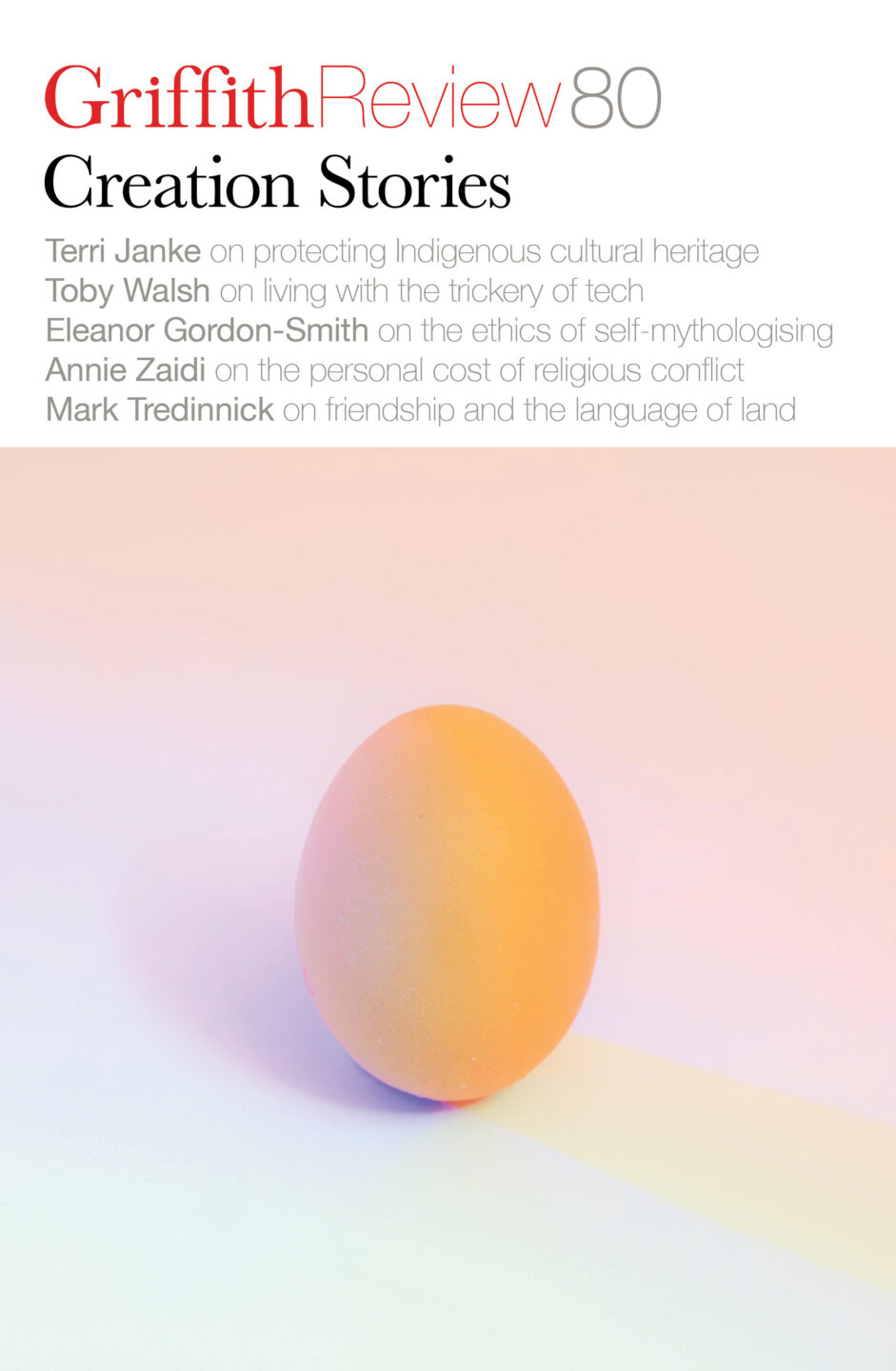Featured in

- Published 20230502
- ISBN: 978-1-922212-83-2
- Extent: 264pp
- Paperback (234 x 153mm), eBook


Already a subscriber? Sign in here
If you are an educator or student wishing to access content for study purposes please contact us at griffithreview@griffith.edu.au
Share article
About the author

Terri Janke
Terri Janke is a Meriam, Wuthathi and Yadhaigana woman, and founder of Terri Janke and Company, an award-winning Indigenous law firm. She is an...
More from this edition

Have you ever seen the rain?
FictionOne by one the streets quietened down. A great hush washed over this city. Even the lights at night seemed dimmer. All of life lay dormant. Or maybe not – Toru couldn’t trust his eyes, could he? He had been living on the streets in the clothes he died in, scrounging food from tables outside restaurants and cafés around the city, but those tables were long gone.

Medea – towards the end
PoetryShe wanted to confuse the staff and brings in a pebble from the garden as suggested, placing it into the pocket of the man in the next room.

The age of discovery
In ConversationPrior to Homo sapiens, populations might have just moved on or gone extinct in the face of environmental risks, whereas with Homo sapiens we were able to disperse widely across the world despite great ecological challenges. The underlying reason for that may be rooted in our social relations, our high level of co-operation – we don’t necessarily see that with earlier human species.